Curly Dock – Tart Spring Green and Cleansing Tonic
This post may contain affiliate links. Read my full disclosure here.
Curly dock is an easy to identify spring green with a unique sour flavor, like wild rhubarb. It also has a long history of medicinal use for a wide variety of ailments.
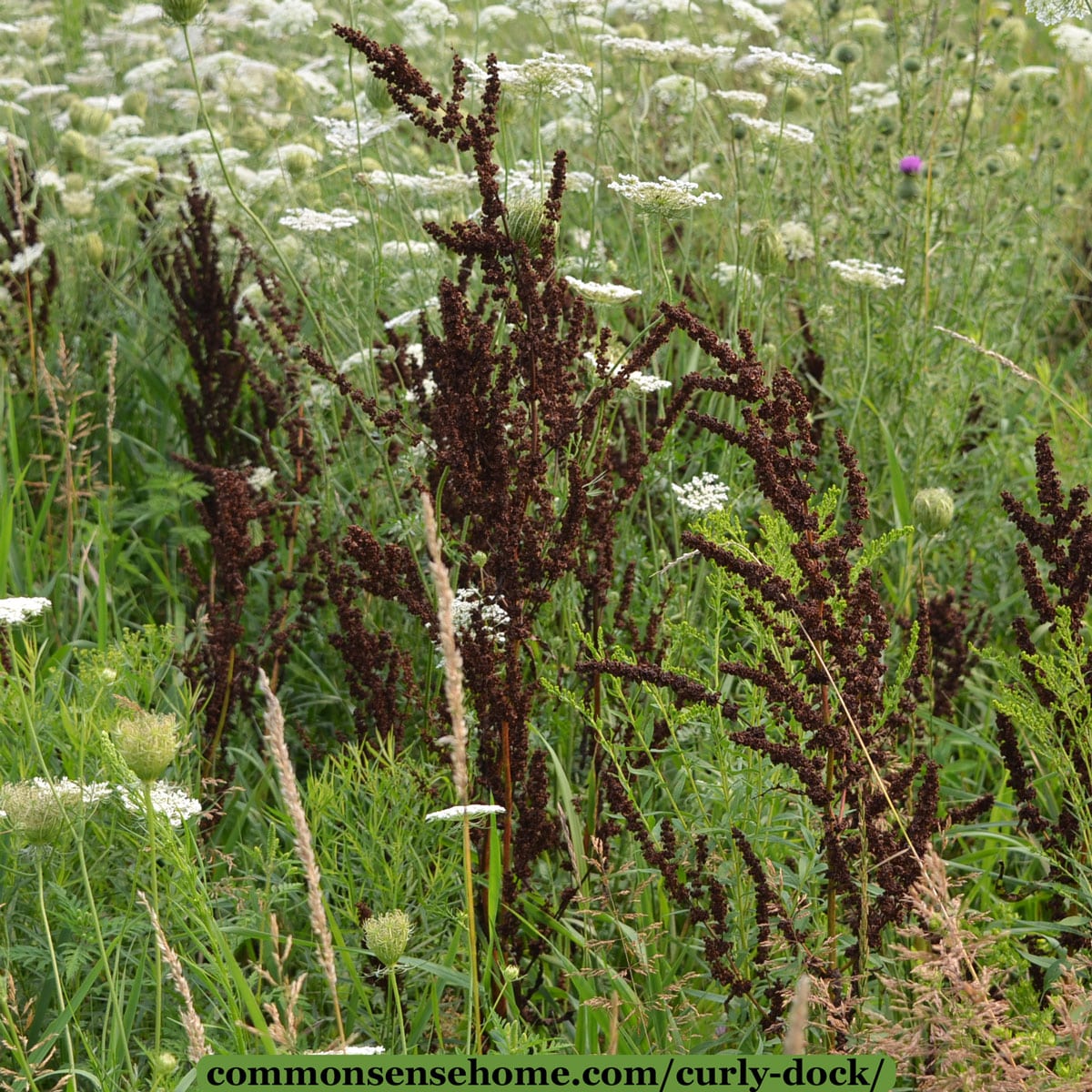
Other names for curly dock include: yellow dock, narrowleaf dock, sour dock, yaller dock, curled dock, Bitter Dock, Bloodwort, Coffee-weed, Garden-patience, Narrowdock, Out-sting and Winter Dock. (source)
Curly Dock Weed Identification
Curly dock (Rumex crispus) is native to Europe and Western Asia. It grows throughout the United States and most of the temperate world, well into the arctic regions.
You’ll find curly dock in gardens, fields, along roadsides and stream beds, railroad tracks, waste areas – pretty much anywhere “weedy”.
Some guides identify it as a perennial, some as a biennial. In my area it acts as a biennial, taking two years to set seed. During the first year, it forms a basal rosette of long, dark green leaves with wavy margins and large tap root. In the second year, it shoots up its distinctive rusty brown flower stalk.

The plant itself ranges from 1′-5′ tall, depending on growing conditions. It prefers disturbed soils in full sun, tolerating a range of moisture levels and conditions from dry to moist, clay to gravel, and just about anything in between.
A few years ago, I grew some beautiful dock roots in a new garden bed. It was low lying and sat wet for much of the season. The potatoes rotted, but the dock loved it.
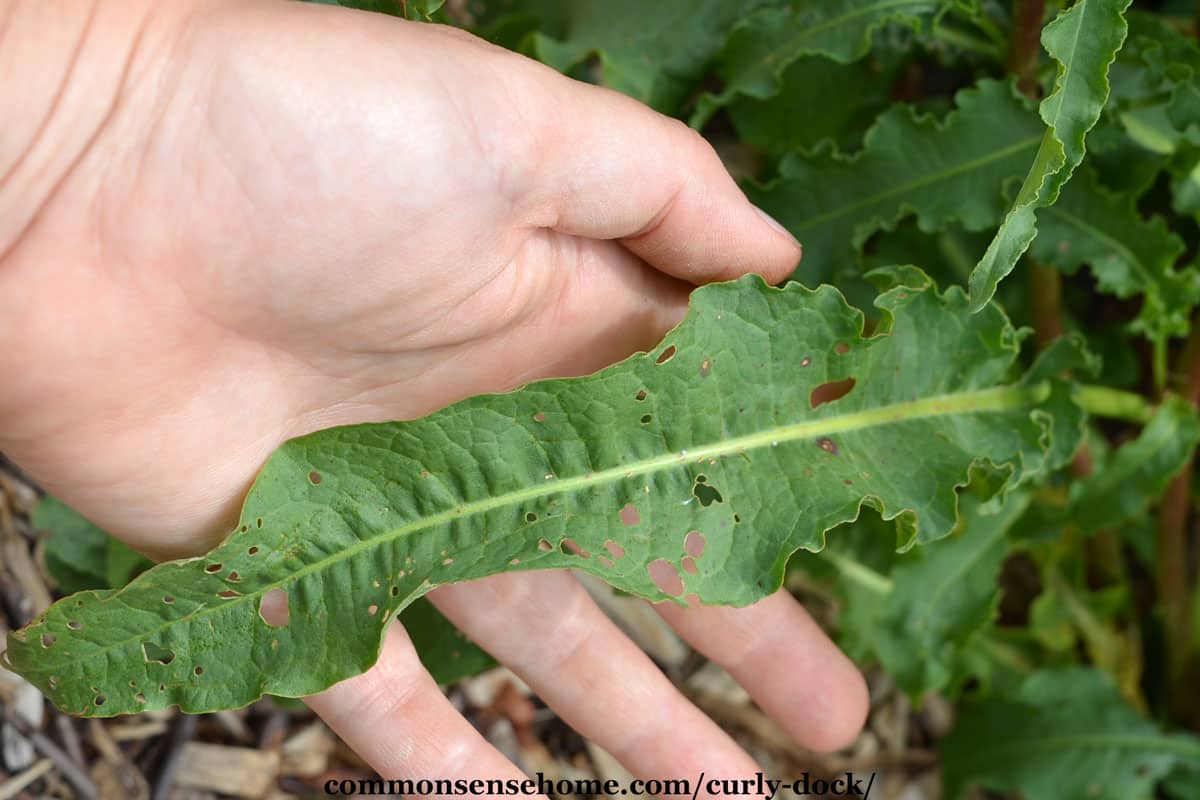
Leaves
The leaves of the curly dock are indeed curly, and tend to be long and narrow. In rich, moist soil they are a little shorter and wider. They can grow up to 2 feet long and 3 1/2 inches across, but most are smaller.
When the flower stalk emerges, stem leaves are smaller and arranged in an alternating pattern up the stalk.
Flowers and Seeds
Curly dock flower stalks emerge in late spring and form spirals of blooms at the top of the plant. They are mostly green and don’t have a significant aroma.
When mature, the flower heads turn reddish brown and are covered with papery sheathes that are triangular or heart shaped. The seeds themselves are egg shaped, with flattened sides.
Each plant may produce as many as 40,000 seeds, which stay viable in the soil for decades. (Don’t let this seed out in the garden.) The plant typically reproduces via these abundant seeds, which are often transported by animals as their papery husks will stick in fur, but they can regrow from the roots.
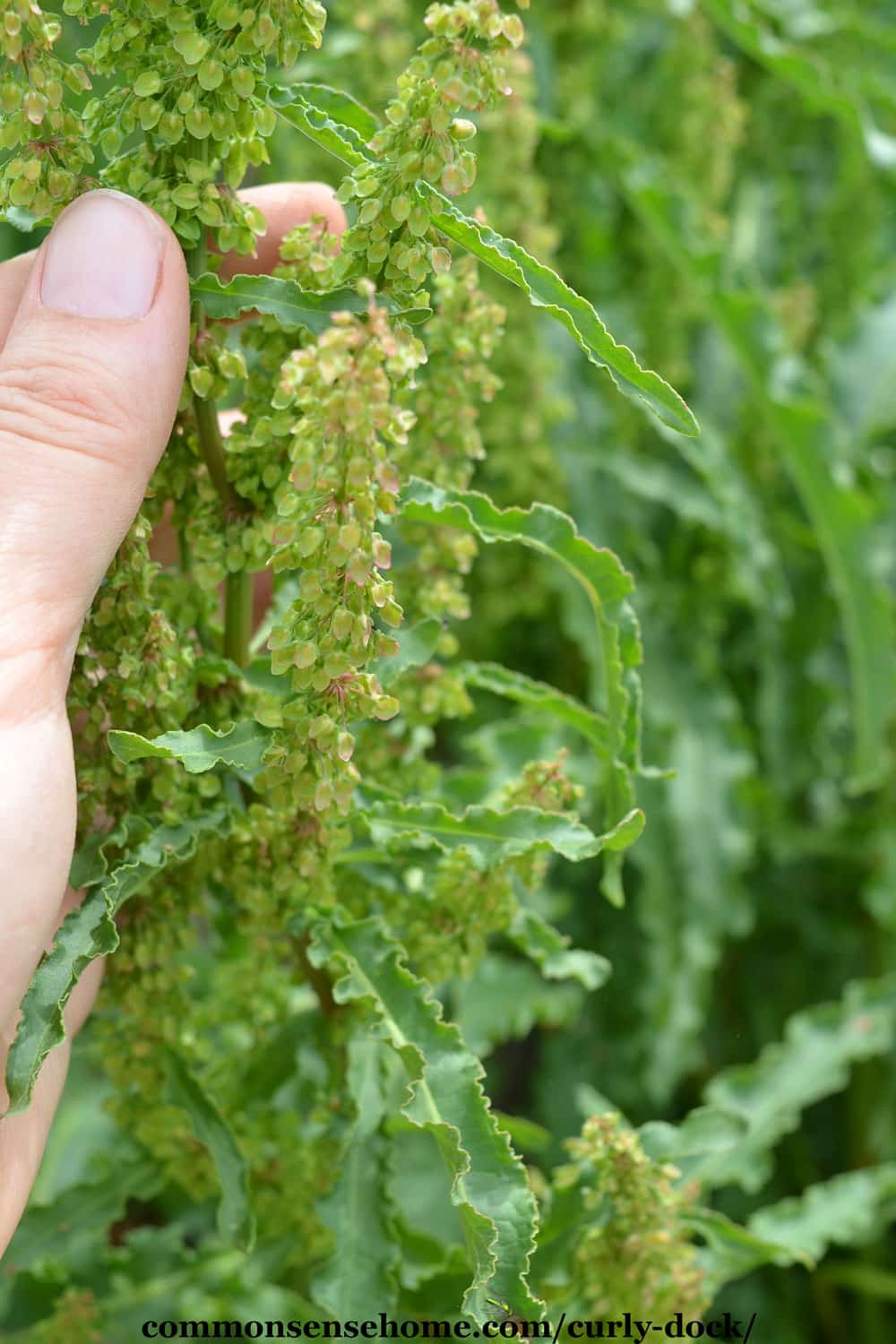
Is Curly Dock Edible?
Yes, you can eat the young leaves, flowering stalk, and seeds, but enjoy in moderation. Dock contains a significant amount of oxalic acid. Cooking helps break this down. Always exercise caution when using any wild plants and make sure you have positively identified the plant.
If you have kidney stones, it’s best to skip high oxalate foods. There’s one documented case from the 1980s of a man with multiple health conditions (diabetes, heavy smoker) who ate over a pound of dock leaves, which turned out to be a lethal dose.
The best leaves to eat are the small ones from the center of the plant. Pick when they are still curled up, or recently emerged. Steam, boil, fry, or saute, using the leaves similar to spinach.
Yellow dock leaves have a slightly sour flavor. It’s okay to eat the young leaves raw, but as mentioned above, cooking breaks down the oxalic acid. The leaves are high in protein, iron, vitamin C, and vitamin A.
To use the seed stalk, pick it before the seed head develops. Peel off the stringy outer layer, chop, and cook.
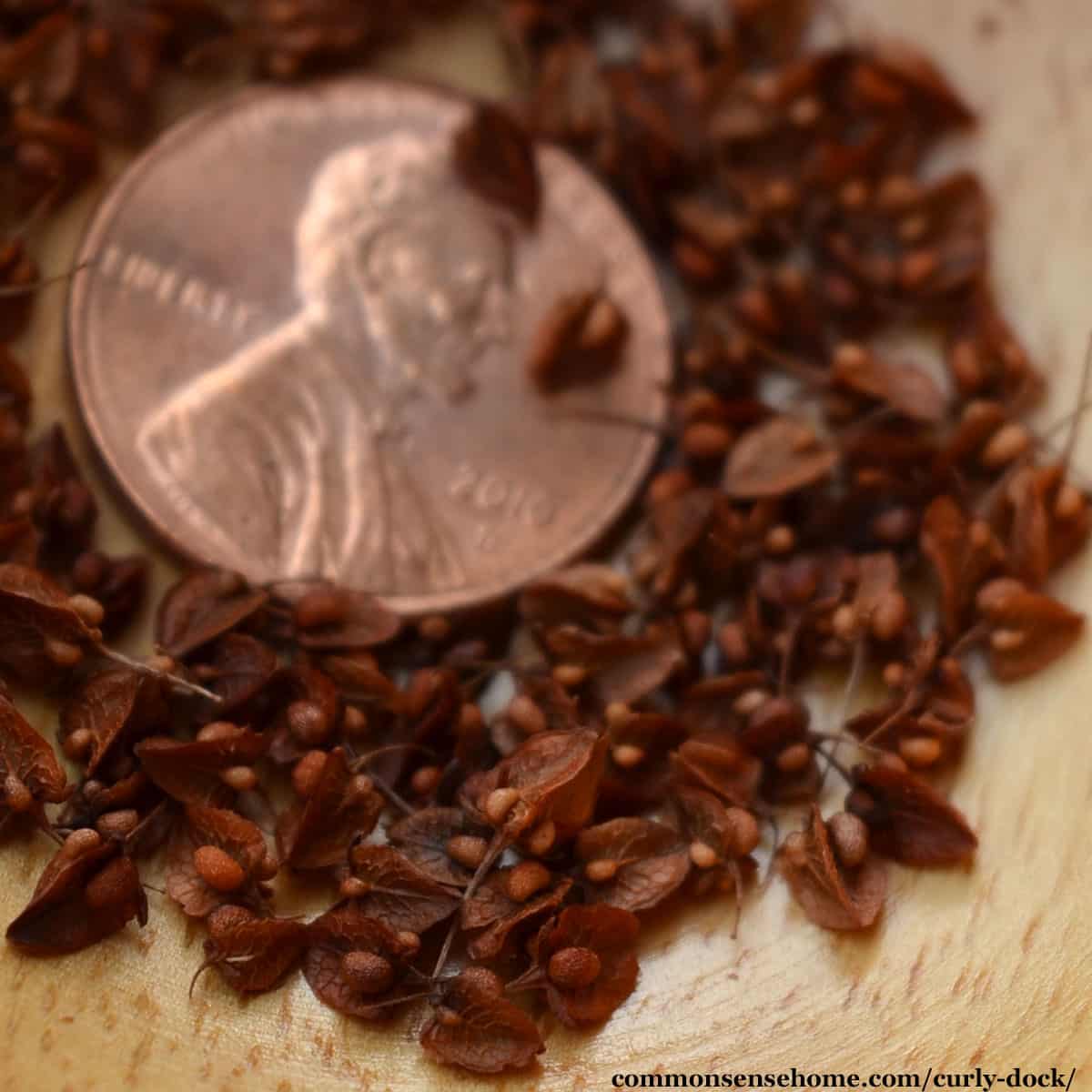
Curly dock is a member of the buckwheat family, Polygonaceae, but the seeds are smaller and more bitter than domesticated buckwheat. By the time you remove the papery coating, there’s not much left.
Some people grind the seeds and the husks together, and use them in small amounts in bread or crackers. They add a lot of insoluble fiber, but I don’t care for the taste or texture.
Another option is to lightly toast the seeds in the husks, and then winnow out the husks. I suspect toasting would improve the flavor, but that’s a lot of work for a small amount of food.
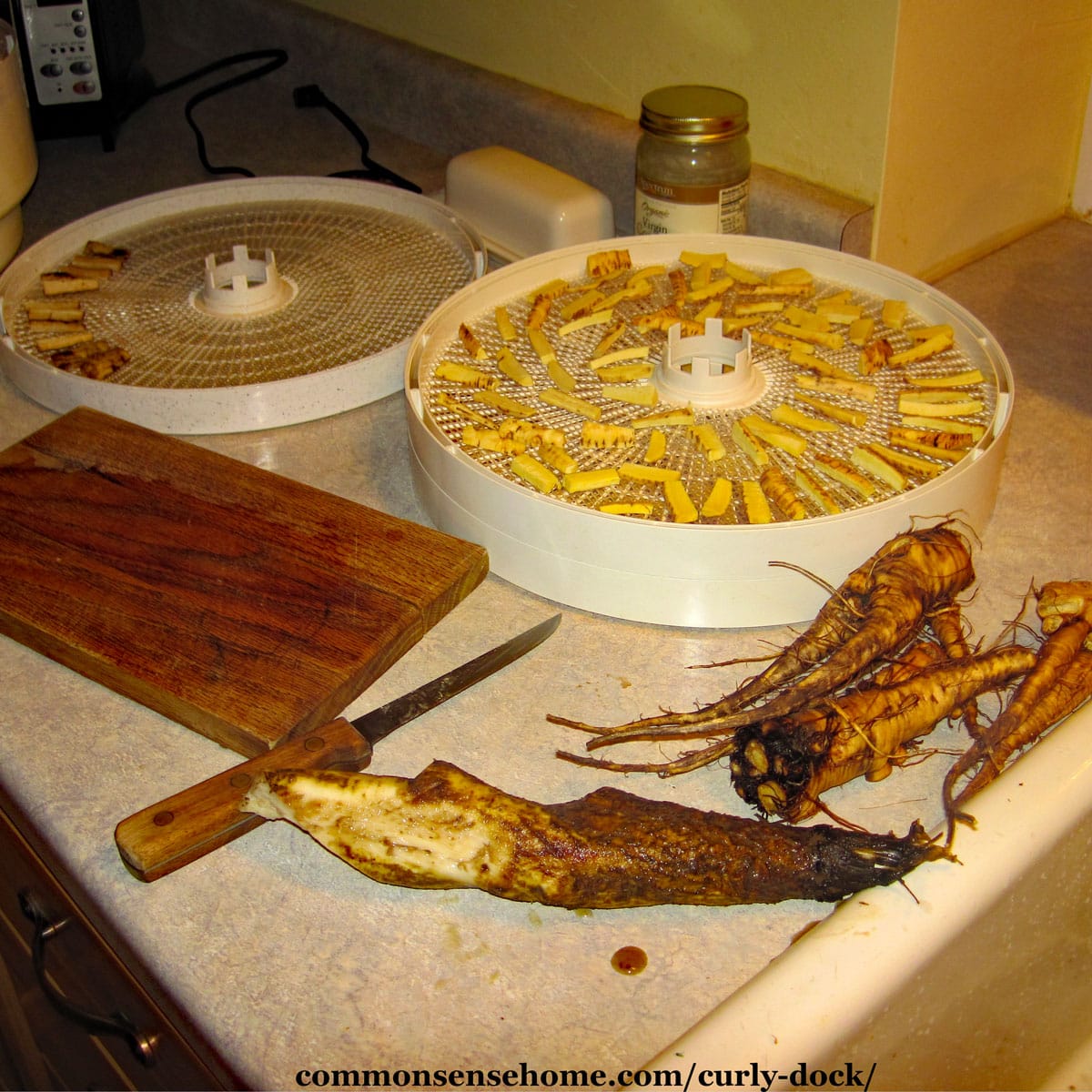
Would you like to save this?
Curly Dock Medicinal Uses
Curly Dock, Rumex crispus, is closely related to common or broad leaf dock, Rumex obtusifolius. The two will readily hybridize, and can be used interchangeably.
Use dock leaves to treat nettle stings, if you don’t have plantain available. Warmed dock leaves may also be used as a poultice to relieve breast swelling during lactation.
Dock root acts as a laxative and blood cleanser. It may help skin conditions (such as psoriasis), constipation, anemia, emphysema, jaundice due to gall bladder problems, and much more.
Harvest the root in late summer or fall from plants without a flower stalk. The older the plant, the darker (more yellow) the root will be.
Scrub the root well and chop off the top. Cut into pieces or strips for dehydrating or making tincture. Yellow dock root is also sold in capsule form.
To make curly dock tincture, place clean and chopped roots in a glass jar and cover with vodka. Put the lid on, and store in a cool, dark location for about a month. Shake the jar every day or two, and don’t forget to date and label it.
Strain out the root through a coffee filter or jelly bag. Store your tincture in a glass bottle and use within five years. Use half a teaspoon once or twice per day for a cleansing tonic.
Cautions
Do not use dock medicinally if you are pregnant, have kidney failure, diabetes, or electrolyte abnormalities. Do not use with any prescription medication linked to hypocalcemia. The oxalic acid may hinder calcium absorption.
This post is for general information only, and is not intended to diagnose or treat a specific illness.
How do I get rid of curly dock?
In the book, “Weeds: Control without Poisons”, the author notes that dock is often a “hardpan weed”. It shows up when there is high soil moisture and/or some drainage or aeration issues. It tends to be a problem in pastures and legume acreage that isn’t plowed for 2 years or more.
Adding calcium to the soil may help. Plowing deep enough to break up the hardpan and disturb the roots will knock it back.
The seeds, as mentioned above, will last for decades in the soil. It’s best to avoid letting them seed out if you want to reduce their spread.
The Weekly Weeder Series
The Weekly Weeder series shares useful information about common wild plants (weeds). Many of them are good for food and medicine, or wildlife habitat.
Other popular posts in the Weekly Weeder Series include:
- Stinging Nettle – One of Most Useful Wild Plants
- Chicory – The Coffee Root Plant
- Broadleaf Plantain – The “Weed” You Won’t Want to Be Without
- Recommended Wildcrafting Books
For more in depth plant studies, consider The Herbal Academy.
Sources:
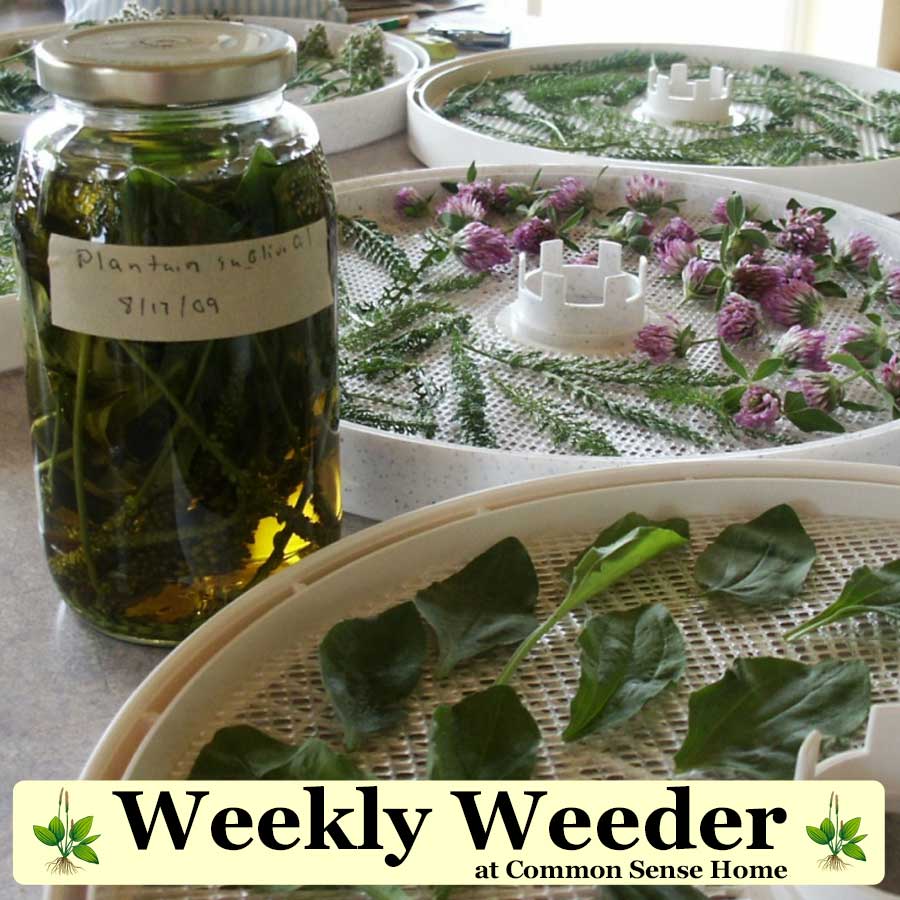
Originally posted in 2012, last updated in 2021.



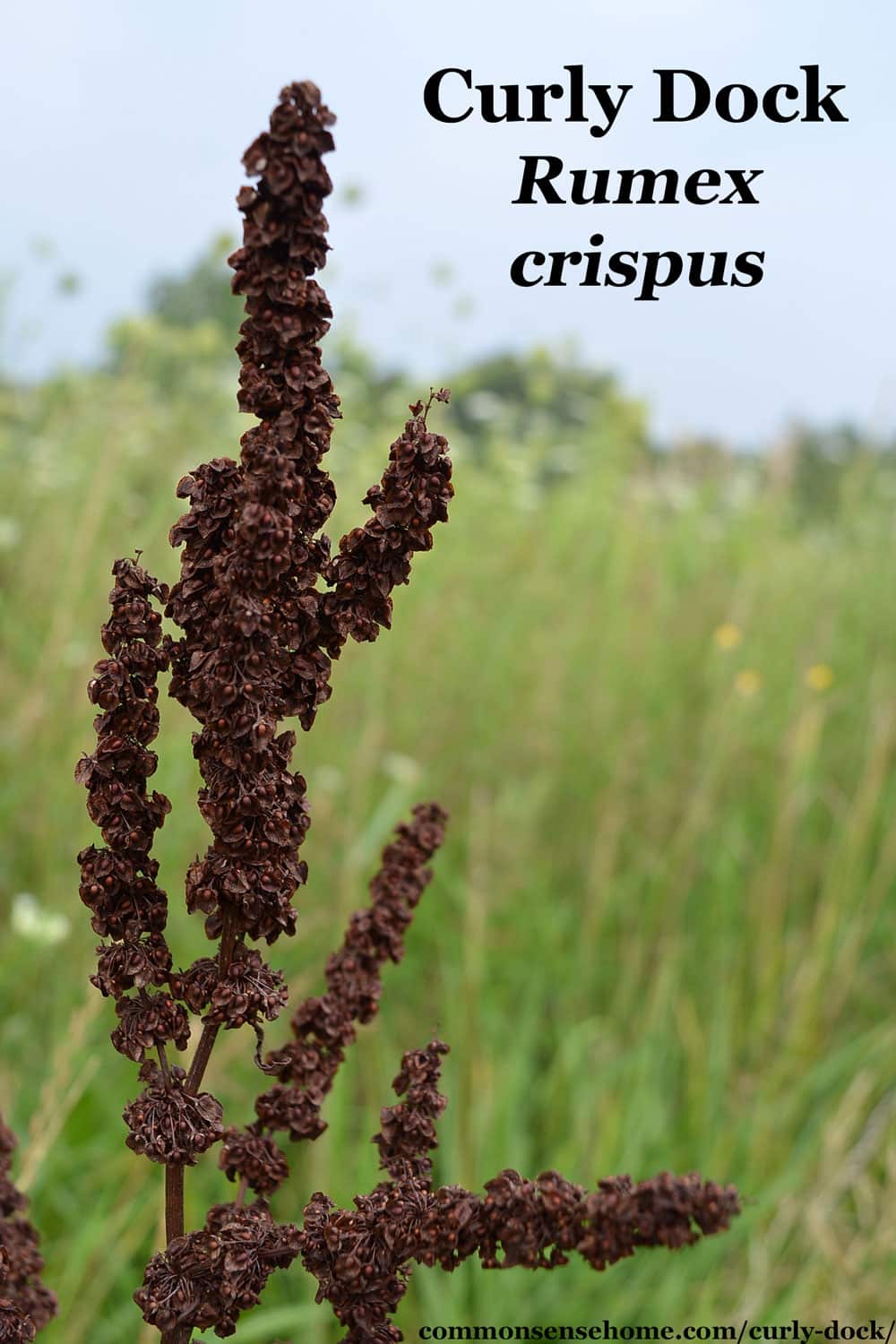
I have had issues with my kidneys and probably won’t try Curly Dock as a therapy, though I find the aroma of the leaves pleasant. I, too had it all over my property and in my garden. Pulling the root is easiest for me in early or mid-May once the soil has thawed but is still very wet. I bunch all the leaves in my right hand at the top of the root, grasp firmly and twist counter-clockwise while steadily pulling up. Whether it looks like the entire root has pulled out or not, I then cut ALL the leaves off of the root and layer them over the hole where the root was, covering the spot completely and as thickly as possible. Any remaining stub will not regrow, for some reason. This does not seem to harm the turf in that area. Laying the leaves over the plant will often work even without pulling the root, if you find it in a spot where doing so not is not possible, but the leaves are abundant. If I find a spot where the plant has begun to develop a seed stalk, I will immediately cut the stalk and carefully bag up the seeds.
Thank you for this information! Curly dock is all over the place where I am now. I love your newsletters, but they get buried under all my junk emails, and I dont see them very often.
You’re welcome. It was a good year for dock here, too.
I’ve noticed as I’ve been watching my weeds over the years that different weeds will be more dominant from one year to the next, depending on conditions. It’s interesting to see the changes from year to year.
I have used Curly Dock all this summer, I find the plant leaves have some of the pain relief for Arthritis pain that I get from Prickly Lattice. I also have found that my skin condition is much improved. I find my blood pressure is much lower now days. I will now try the root to see how it works,
I hope it helps.
Wow>I thought it was just an invasive that some birds liked and insects didn’t. I am trying to restore a prairie. Do you have information on Native prairie plants that are edible?
I don’t have anything on the site that specifically focuses only on native prairie plants, nor have I come across something that’s a match, although it may exist somewhere. Most of the native prairie info I’ve seen focuses on simply whether or not the plant is native, and sometimes wildlife uses.
Carole I live in Minnesota, I went to Amazon and found a book that was used to identify all wild plants in the Midwest which covered MI, Wi, and Mn it is called forging the Midwest.. I also bought a book by the same author on the Madicinal use of wild plants. I have found a grate deal of good information on these edible plants and curly dock is a good one. There are books out there to cover most states so I am sure you can find one. Good luck on your quest
Is is this one, Sam? “Midwest Foraging: 115 Wild and Flavorful Edibles from Burdock to Wild Peach (Regional Foraging Series)“
Laurie yes they are the ones I purchased and use a lot in the summer and spring. I eat a lot of wild plants on my land
Is THAT what that is! We have this all over our place and I just thought it was ugly. I had no idea. I really to appreciate this column. I’m really wanting to learn how to forage and we have so many different varieties growing out on our acreage. I want to make use of them as much as possible.
It’s funny how these jumped out at me at we were driving around today. I know writing these posts has changed how I look at my surroundings.
The steamed leaves are safe but DO NOT CONSUME THE LIQUIDS from steaming the leaves of this plant. As a teenager, I was given a book on wild foraging. My first forage was dock. Thinking the juices from the leaves would be full of vitamins like spinach I happily downed the residual liquids. A few hours later I was vomiting and taken to the hospital. They pumped my stomach, gave me iv fluids and kept me in hospital overnight. I suffered severe leg cramps from crystals that formed in my muscle tissue caused by chemical components in the juices of the dock leaves. I was told by my physician that a previous dock patient had died from the juice consumption.
Thanks for the warning. It’s good to note that while many wild plants are higher in nutrients than their tame cousins, they can also be higher in some problematic compounds. Always try small amounts at first and watch for adverse reactions.
As in all things moderation is the key, I take the juice off the leaves and grind the leaves up and combined them. I use 2 to 3 ounces a day and find I have very good results with body needs. Blood pressure is normal cholesterol down 52 points, pain reduction, and many things I can not identify inside. I have no use for pills any more because of this plant.